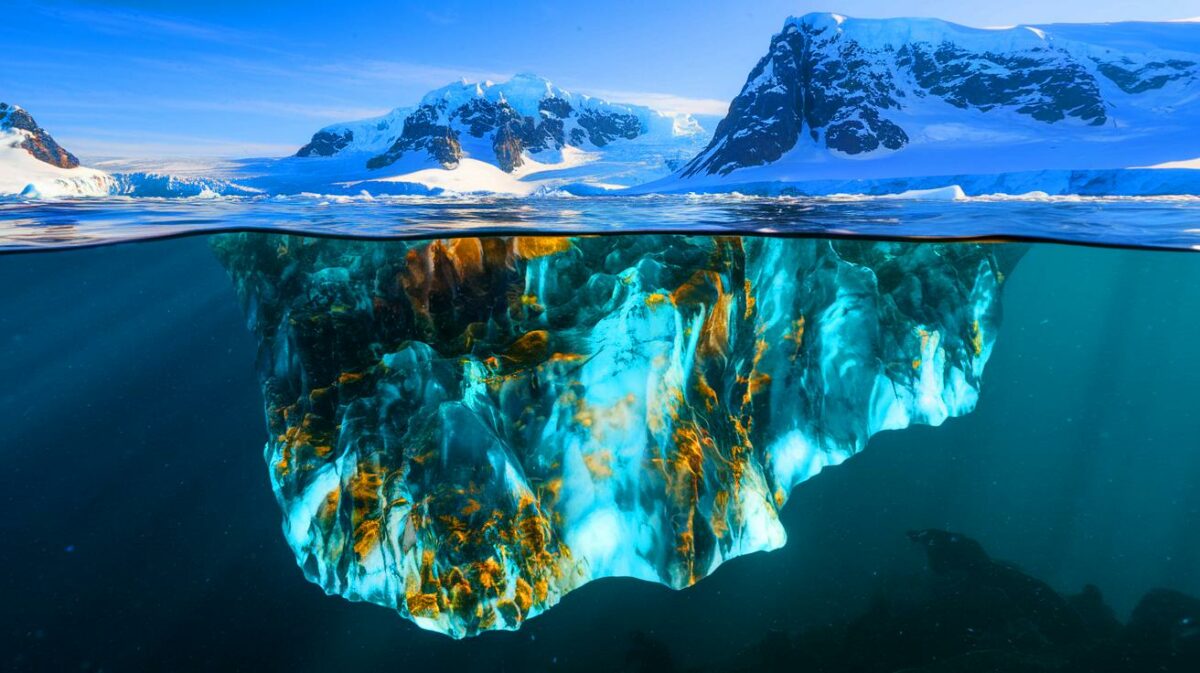| IN A NUTSHELL |
|
The majestic and often mysterious continent of Antarctica continues to surprise the scientific community with its hidden treasures. In early 2025, a historic event unfolded when a colossal iceberg, named A-84, broke away from the George VI Ice Shelf. This natural phenomenon, involving an iceberg the size of Chicago, exposed a pristine underwater ecosystem. This unexpected revelation provides researchers with a golden opportunity to delve into ecosystems that have been preserved under thick ice for centuries.
A Surprising Scientific Discovery
Underneath the thick ice cover, researchers have uncovered a vibrant, previously unknown ecosystem teeming with life. Among the extraordinary creatures discovered are icefish, giant sea spiders, and even octopuses, all observed for the first time in this remote area. The team of scientists was astonished to find large coral formations and sponges brimming with marine life. These findings highlight the rich biodiversity thriving beneath the Antarctic ice, challenging our understanding of life in extreme environments. The discovery emphasizes the importance of protecting these unique habitats, which offer invaluable insights into the resilience of life on Earth.
An Audacious Scientific Expedition
The Schmidt Ocean Institute led an ambitious expedition aboard the research vessel R/V Falkor (too) in the Bellingshausen Sea. For eight days, the team utilized the remotely operated vehicle ROV SuBastian to explore depths of up to 4,265 feet beneath the surface. Initially, the mission aimed to study the interface between the ice and the sea, but the detachment of the iceberg transformed it into an extraordinary opportunity. Antarctic ice shelves have long concealed these unique ecosystems under nearly 500 feet of ice. In this extreme environment, most organisms rely on organic matter descending from the sunlit surface. However, researchers believe ocean currents play a crucial role in delivering essential nutrients to this hidden ecosystem.
The Role of Icebergs in Understanding Earth’s Climate
Icebergs like A-84 are not just geological phenomena; they are critical indicators of changes in Earth’s climate system. The calving of such massive icebergs provides scientists with vital data on the dynamics of ice shelves and the potential impact of climate change on sea levels. By studying these events, researchers can better predict future changes in the polar regions and their global repercussions. The discovery of new ecosystems also offers insights into how life adapts to extreme conditions, which could have implications for understanding the potential for life on other planets.
Protecting Antarctica’s Hidden Ecosystems
As the world becomes increasingly aware of the environmental challenges facing our planet, the protection of Antarctica’s hidden ecosystems has become more critical than ever. These ecosystems are not only scientifically significant but are also vulnerable to human activity and climate change. International collaboration is essential to ensure these pristine environments remain undisturbed. Efforts to establish marine protected areas around Antarctica aim to safeguard these unique habitats, allowing future generations to continue exploring and learning from this icy frontier. The recent discoveries reiterate the importance of continued research and conservation in maintaining the delicate balance of this remote wilderness.
The discovery of a hidden world beneath the Antarctic ice raises profound questions about our planet’s mysteries and the resilience of life. As scientists continue to explore these uncharted territories, what other secrets might Antarctica’s icy depths hold, waiting for us to uncover?
Did you like it? 4.4/5 (22)









Wow, just when you think you’ve seen it all! What an incredible discovery! 🌎
Is it possible that there are even more hidden ecosystems under Antarctica we haven’t found yet?
Thank you for sharing this amazing find. Nature never ceases to amaze me!
Giant sea spiders? That’s the stuff of nightmares! 🕷️